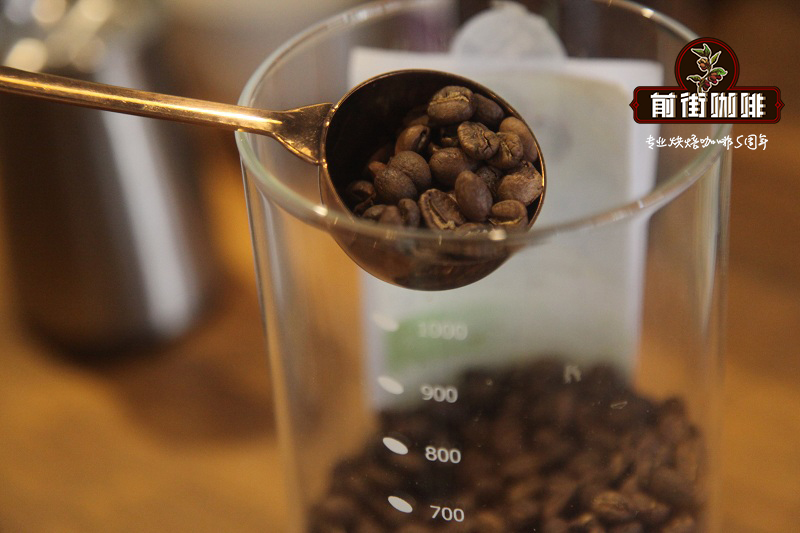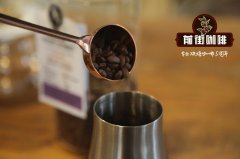Introduction to the Story Information of Saint-Isi Manor in Nicaragua _ Maracadura suggestion for washing Coffee

Professional coffee knowledge exchange more coffee bean information please follow the coffee workshop (Wechat official account cafe_style)
[Nicaragua NICARAGUA]
Nicaraguan coffee comes from the Jinotega region, located in the northern part of Nicaragua, which provides the best coffee growing environment in the world. For 150 years, generations of local farmers have grown high-quality Arabica coffee in a shady way that maintains ecological diversity, intercropping with banana trees, mango trees, mahogany, etc., which also protects local rare flower varieties in winter. It has become a place for birds to migrate, with an average height of more than 1200 meters and coexisting in harmony with the natural environment.
Coffee beans are usually grown in an organic and shady way.
The palate is mellow and moderate, with bright acidity and aromas of apricot.
Lime-like acidity turns to sweet taste, with fresh citrus aromas and a long, supple finish.
High-quality Arabica beans planted in natural shade were treated by washing.
◎ suggests food pairing: cheesecake
Nicaragua, one of the poorest countries in Latin America. In the middle of the 20th century, it experienced a time when the price of international coffee market was hit hard. In the middle and late 20th century, in the name of curbing communism, the United States intervened in the surging independence movement in Latin American countries and imposed trade barriers against Nicaragua, which inspired many young people in Europe and the United States to join the fair trade movement. For example, in the United Kingdom in solidarity with the solidarity campaign launched in Nicaragua, many people bought coffee from Nicaraguan cooperatives to counter the United States trade embargo. With the assistance of the International Fair Trade Organization, Nicaraguan coffee has embarked on its own international road, won international awards and won recognition in terms of quality.
Practice and innovation are the driving force for the development of Saint-Issy Manor (Finca San Isidro). When Byron was a teenager, he used to travel from farm to farm, repairing machines and other equipment in the washing plant. His father's farm was expanding, so Byron built four washing plants.
The new washing plant starts with the draft drawings, and every screw and every inch of paint is built by Byron himself. Only three peeling machines were bought from the family, one of which was specially calibrated to remove the skin of the larger Malakadura fresh fruit. The water washing treatment station is equipped with a sorting system, which can sort fresh coffee fruits according to weight and quality.
Analysis of Nicaraguan Coffee brewing
Recommended cooking methods: siphon, hand flushing
Degree of grinding: 3.5 (Fuji R440, Japan)
V60 filter cup, 15g powder, water temperature 91-92 degrees, grinding 3.5.The ratio of water to powder is close to 1:15
33 grams of water is steamed for 25s
Segment: water injection to 100ml cut off, slow water injection to 225ml
That is, 30-100-95
Other suggestions for trickling extraction:
Normal pressure, recommended grinding degree of 3.5-4 / water temperature 92 °C
Philharmonic pressure, recommended 2.5 grinding degree, water temperature 88 °C
Hand punch: 3.5 degree of grinding, water temperature 89 °C
END
Important Notice :
前街咖啡 FrontStreet Coffee has moved to new addredd:
FrontStreet Coffee Address: 315,Donghua East Road,GuangZhou
Tel:020 38364473
- Prev

Can I do SOE in Huang Pacamara, Nicaragua? how do Nicaraguan coffee beans do Italian concentrate?
Professional coffee knowledge exchange more coffee bean information please follow the coffee workshop (Wechat official account cafe_style) this time a kind of coffee shared with you is Nicaraguan coffee lemon tree manor washing yellow Pacamara. First of all, let's get to know Nicaragua, a coffee producer in Central America. Coffee was first brought by Catholic missionaries in Nicaragua in 1790.
- Next

Introduction to the Flavor of Wild Latin Blue Mountain Elephant Bean Coffee in Nicaragua
Professional coffee knowledge exchange more coffee bean information please follow the coffee workshop (Wechat official account cafe_style) [wild pull
Related
- Detailed explanation of Jadeite planting Land in Panamanian Jadeite Manor introduction to the grading system of Jadeite competitive bidding, Red bid, Green bid and Rose Summer
- Story of Coffee planting in Brenka region of Costa Rica Stonehenge Manor anaerobic heavy honey treatment of flavor mouth
- What's on the barrel of Blue Mountain Coffee beans?
- Can American coffee also pull flowers? How to use hot American style to pull out a good-looking pattern?
- Can you make a cold extract with coffee beans? What is the right proportion for cold-extracted coffee formula?
- Indonesian PWN Gold Mandrine Coffee Origin Features Flavor How to Chong? Mandolin coffee is American.
- A brief introduction to the flavor characteristics of Brazilian yellow bourbon coffee beans
- What is the effect of different water quality on the flavor of cold-extracted coffee? What kind of water is best for brewing coffee?
- Why do you think of Rose Summer whenever you mention Panamanian coffee?
- Introduction to the characteristics of authentic blue mountain coffee bean producing areas? What is the CIB Coffee Authority in Jamaica?

